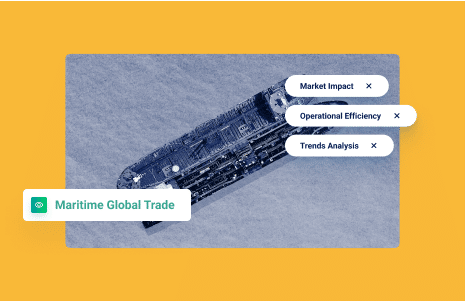How to Cope with Red Sea Complexity

What’s inside?
Yemen’s Houthi rebels continue to try their best to disrupt the Red Sea area, with the potential to seriously impact shipping lanes and the supply chain/logistics operations.
Yemen’s Houthi terrorists hijacked the Galaxy Leader, an Israeli-linked cargo ship traversing the critical Red Sea shipping route, and took its 25 crew members as hostages in mid-November, according to The Washington Post.
This week (late November), a commercial tanker named “Central Park” came under attack from an unknown entity. The USS Mason, a guided-missile destroyer, responded to the call for help.
Five armed individuals eventually fled, but CNN reports that less than two hours after the Navy’s VBSS team cleared the vessel, two ballistic missiles were fired from areas controlled by Houthi rebels in Yemen toward Central Park and the USS Mason in the Gulf of Aden.
What should we expect from this fluid and potentially impactful situation in the Red Sea? How will it affect shipping and other maritime and supply chain/logistics organizations?
The World Will Definitely be Watching
The Associated Press notes that we are talking about an area of great strategic importance.
“The Red Sea, stretching from Egypt’s Suez Canal to the narrow Bab el-Mandeb Strait separating the Arabian Peninsula from Africa, remains a key trade route for global shipping and energy supplies.”
The article went on to explain that this situation could quickly escalate:
“Significant Houthi interference with commercial shipping through the Strait is almost certain to trigger U.S. intervention due to the political and potentially economic implications,” the Soufan Center, a non-profit focused on global security challenges, warned.
Imagine if one of those Houthi missiles had actually hit the USS Mason…
The Ecosystem is Nervous
This worrisome geopolitical situation is not exactly new. The Houthis engaged in piracy in the Gulf of Aden and the Red Sea in August. At least two ships have already diverted their routes post attack, says the Ship & Bunker news team.
“There are ships with no Israeli connection that usually traverse the Suez Canal on their way from Asia to the US and Canada, and they too are considering sailing round Africa. This will make the voyage longer for them, but it should be mentioned that, because of the over-supply of tankers and the congestion in the Suez Canal, many of them sail round the Cape of Good Hope on their way to North America,” said Judah Levine, head of research at Israeli online freight marketplace Freightos, to Globes.
Meanwhile, TradeWinds, a global shipping news source, notes that the sophisticated nature of the hijacking has alarmed the insurance market and marine underwriters are assessing the potentially higher risk in the Red Sea area.
Is There Already Tangible Impact in the Region?
Interestingly, Windward’s Maritime AI™ platform shows that the Red Sea is no more congested or less traveled than usual. Apparently, shipping companies and carriers have not yet changed their usual patterns in any meaningful way.


What Should You Be Looking At?
The key data points to observe in choosing a trade lane/shipping route for cargo are capacity and the reliability over time of relevant gateways for your organization. Cargo owners should not feel the need to take drastic measures, such as rerouting every time a waterway or port is congested for a short period of time.
This type of approach is simply not viable financially. But keeping a close eye on events that may become long-term trends can be beneficial and will unlock proactive behaviors. Windward’s Maritime AI™ platform includes predictive analytics and automated alerts.
In terms of region-based maritime piracy, the Maritime AI™ platform can identify vessel trend patterns with automatic alerts based on behavioral analysis. This includes detection of deceptive shipping practices common to pirates, such as dark activity and location (GNSS) manipulation.
Insurers can invest in technology that will send them notifications on risky vessels within their portfolio and they can go beyond rule-based evaluations for underwriting with dynamic behavioral insights.
Windward will keep you updated as this Red Sea situation evolves…








